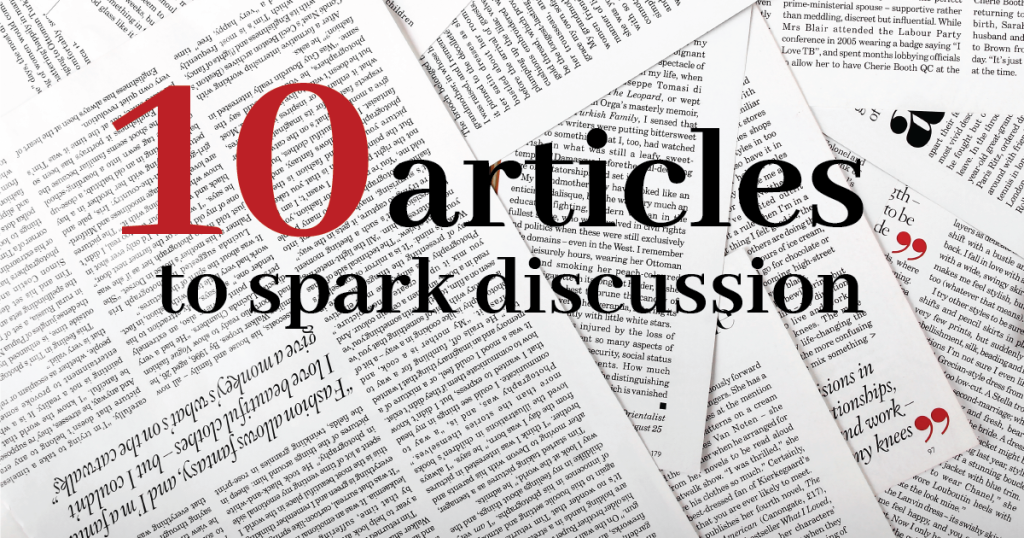10 Articles to Spark Discussion
Collective Intelligence (CI), def.
Effective, decentralized, and agentic decision-making across individuals and communities to produce best-case decisions for the collective.
Article 1 ♦ Collective Intelligence: Getting smarter together
“These two new reports open a new window on how emerging collective intelligence approaches such as Artificial Intelligence, crowdsourcing, and remote sensing can tackle some of the world’s most difficult challenges – from climate change to poverty and inequality and beyond.” Achim Steiner, Administrator, UNDP
Article 2 ♦ Swarm Learning: Swarm learning for decentralized artificial intelligence in cancer histopathology. Article published in Nature, April 2022
- Artificial intelligence (AI) can predict the presence of molecular alterations directly from routine histopathology slides. However, training robust AI systems requires large datasets for which data collection faces practical, ethical and legal obstacles. These obstacles could be overcome with swarm learning (SL), in which partners jointly train AI models while avoiding data transfer and monopolistic data governance.
Article 3 ♦ 3D Intelligence: Distributed, decentralized, and democratized artificial intelligence
The accelerating investment in artificial intelligence has vast implications for economic and cognitive development globally. However, AI is currently dominated by an oligopoly of centralized mega-corporations, who focus on the interests of their stakeholders. There is a now universal need
Article 4 ♦ Biology, Buddhism, and AI: Care as the Driver of Intelligence by Thomas Doctor, Olaf Witkowski, Elizaveta Solomonova, Bill Duane, and Michael Levin.
Intelligence is a central feature of human beings’ primary and interpersonal experience. Understanding how intelligence originated and scaled during evolution is a key challenge for modern biology. Some of the most important approaches to understanding intelligence are the ongoing efforts to build new intelligences in computer science (AI) and bioengineering.
Article 5 ♦ Asynchronous Evolution: Emergence of Signal-Based Swarming byOlaf Witkowski and Takashi Ikegami
Since Reynolds boids, swarming behavior has often been reproduced in artificial models, but the conditions leading to its emergence are still subject to research, with candidates ranging from obstacle avoidance to virtual leaders. In this paper, we present a multi-agent model in which individuals develop swarming using only their ability to listen to each others signals.
Article 6 ♦ From Swarm Intelligence to Swarm Robotics by Gerardo Beni, Department of Electrical Engineering, University of California
The term “swarm” has been applied to many systems (in biology, engineering, computation, etc.) as they have some of the qualities that the English-language term “swarm” denotes. With the growth of the various area of “swarm” research, the “swarm” terminology has become somewhat confusing. In this paper, we reflect on this terminology to help clarify its association with various robotic concepts. This paper is meant as an introduction to a panel discussion on the use of various terms in current use, such as “swarm”, “swarming”, “swarm intelligence”, “swarm optimization”, “swarm engineering” and “swarm robotics”. I will try to give some perspective by way of tracing, very imperfectly and subjectively, the evolution of some of these terms, hoping that, in looking at them, some robotics concepts may become clearer.
Article 7 ♦ Collective Intelligence and knowledge management as a tool for innovations by Andrea Svobodová1 , Petra Koudelková
The collective intelligence, knowledge management and the innovation process play a significant role in our fast changing world of business. The article describes the most important findings and definitions concerning the process of innovation in the enterprises and Employee Involvement and empowerment. It shows the approach of the initial idea and the ability to keep the conception until the idea is properly brought to the market.
Article 8 ♦ Social semantics: altruism, cooperation, mutualism, strong reciprocity and group selection S. A. West, A. S. Griffin & A. Gardner
From an evolutionary perspective, social behaviours are those which have fitness consequences for both the individual that performs the behaviour, and another individual. Over the last 43 years, a huge theoretical and empirical literature has developed on this topic. However, progress is often hindered by poor communication between scientists, with different people using the same term to mean different things, or different terms to mean the same thing. This can obscure what is biologically important, and what is not.
Article 9 ♦ Are collectives morally responsible for harm? by Stanford Encyclopedia of Philosophy
The notion of collective responsibility, like that of personal responsibility and shared responsibility, refers in most contexts to both the causal responsibility of moral agents for harm in the world and the blameworthiness that we ascribe to them for having caused such harm. Hence, it is, like its two more purely individualistic counterparts, almost always a notion of moral, rather than purely causal, responsibility.
Article 10 ♦ What is a Decentralized Autonomous Organisation?
A decentralized autonomous organization (DAO) is an emerging form of legal structure that has no central governing body and whose members share a common goal to act in the best interest of the entity. Popularized through cryptocurrency enthusiasts and blockchain technology, DAOs are used to make decisions in a bottom-up management approach.

